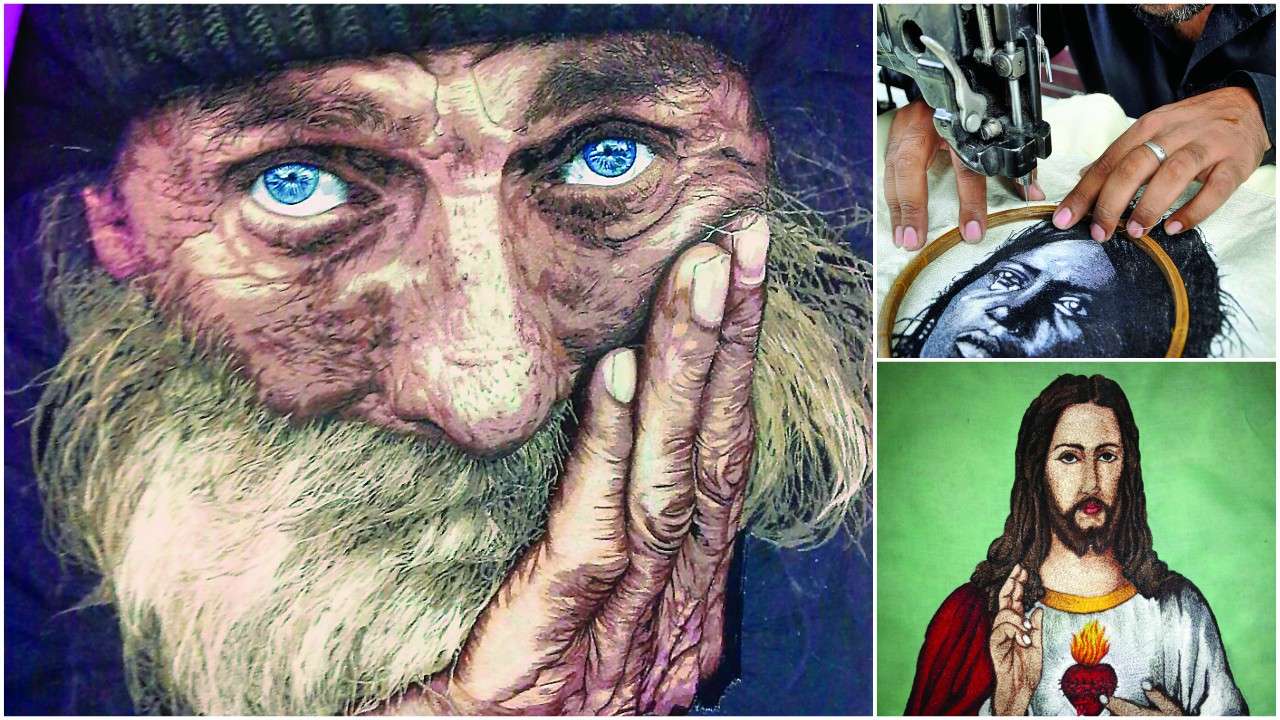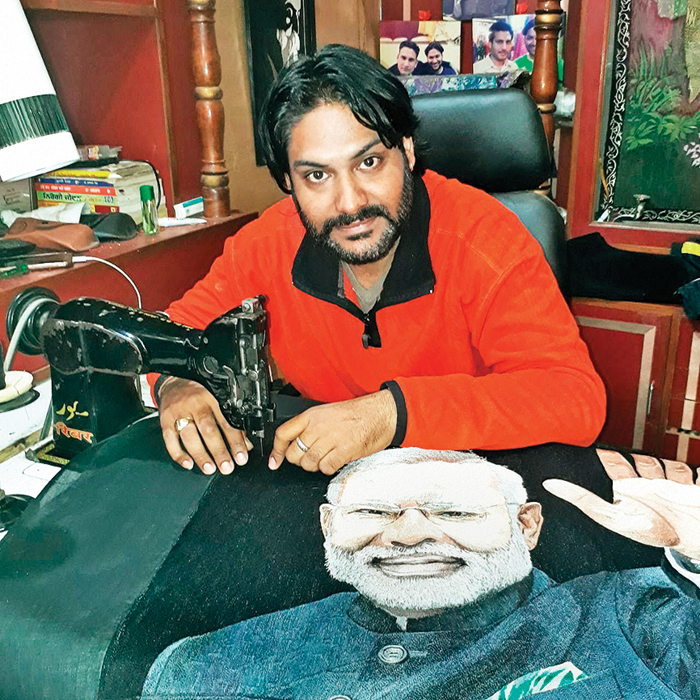
Arun Kumar Bajaj plies an unusual craft – he 'paints' with his sewing machine. Late last month, he presented Union minister Smriti Irani with a specimen of his handiwork: a large, 4x2 feet 'painting' of the court of Ranjit Singh, the fabled Maharaja of the Sikh empire with nearly 2,000 human figures – courtiers, soldiers, noblemen, etc, in all their regalia. "It took me over a year to make this piece," says Bajaj, who is a tailor by profession. Neither is this the largest painting that the 35-year-old Bajaj has done. That distinction goes to a 6x4 feet image of the deity Krishna which got him a certificate from India Book of Records as a 'unique thread artwork'. Completed over three years, it was made using 28,36,000 metres of thread. Recently, he also presented Prime Minister Narendra Modi with a stitched portrait.

(Arun Kumar Bajaj with the stitched portrait of Narendra Modi that he later presented to the Prime Minister; (above) specimens of Bajaj’s handiwork)
"I've been stitching for the last 23 years, since I was 12," says Bajaj, who runs a tailoring enterprise in Patiala's vibrant Adalat Bazar that specialises in stitching traditional achkans and sherwanis. "My father was a tailor but he died early, when I was 16, and I had to drop out of school to take over the shop. I was good at sketching in school, and this was a way I could combine the two arts," explains Bajaj, who got the trademark 'Needleman' registered with his name a few years ago. "I didn't want to remain just a darzi all my life," he says. "I want to make a name for myself, even though my obsession has caused financial uncertainty to my family."
The West, especially France, has a long tradition of embroidered tapestries, called needlepoint or petit point. Where Bajaj's tapestries differ is that instead of being done by hand, as it usually is, they are done entirely on the sewing machine. "You need to be very precise because once you've stitched the cloth, there's no way you can undo it. I also don't overstitch – it's all done in a single layer to give the painting a neat look," he explains.
In recent years, Bajaj has organised exhibitions of his paintings in Pune, Mumbai, Delhi and other cities. He's also sold a few of them, fetching as much as `3.5 lakh for one of them from a sale at Dilli Haat in the capital.
The presentations to Modi and Irani, which they publicised over Twitter, will no doubt fetch more attention and better prices for his work.